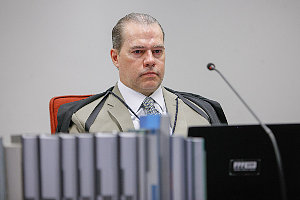05/10/2022

Para a Terceira Seção do Superior Tribunal de Justiça (STJ), é cabível o ajuizamento de revisão criminal contra decisão unipessoal de relator que deu provimento a recurso especial para restabelecer sentença condenatória.
Por maioria, o colegiado decidiu admitir as revisionais de decisões monocráticas como forma de dar maior garantia aos réus em processo penal e assegurar o exercício de um direito que a lei não restringe.
Segundo o ministro João Otávio de Noronha, cujo entendimento prevaleceu no colegiado, há julgados no STJ que, por falta de previsão regimental específica, não enfrentaram o mérito do pedido de revisão ajuizado contra decisão singular do relator.
O magistrado explicou que esse entendimento parte de uma leitura restritiva do artigo 239 do Regimento Interno do STJ. “Em síntese, pode-se afirmar que, se um órgão do tribunal decide reiteradamente, da mesma maneira, uma questão de fato ou de direito, seus integrantes ficam autorizados a decidir, de forma isolada e prévia, os demais processos sobre o mesmo tema, que inevitavelmente teriam a mesma decisão”, afirmou.
Estabilidade e segurança jurídica devem ser fortalecidos
Na opinião do ministro, tal reiteração de entendimentos consolidados fortalece a estabilidade e a segurança jurídica. “Por esse motivo, as cortes superiores consideram que o julgamento singular não contraria o princípio da colegialidade”, acrescentou.
Noronha observou que uma pesquisa na jurisprudência do STJ revela não haver consenso sobre o cabimento de revisão criminal de decisão unipessoal de relator.
“Muitos julgados a inadmitem, adotando uma posição restritiva; outros tacitamente a admitem, adentrando o tema revisional sem nenhum tipo de consideração acerca do cabimento; outros poucos, por fim, expressamente admitem o cabimento de revisões criminais de decisões monocráticas”, apontou.
Em seu voto, o ministro defendeu que o posicionamento mais adequado a ser adotado na Terceira Seção é aquele que admite revisionais de decisões monocráticas de relator, para dar maior garantia aos réus.
“A decisão singular substitui o julgamento colegiado, sendo-lhe ontologicamente equiparada. Representa mera antecipação de julgamento, que não fere o princípio da colegialidade ou do juiz natural”, concluiu.
O número deste processo não é divulgado em razão de segredo judicial.
Fonte: STJ












